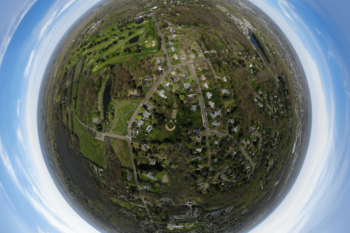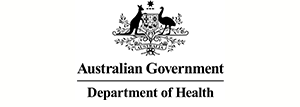Employing physical activity to prevent chronic disease

Status completed
Start Date
End Date
Physical inactivity contributes nearly the same as obesity and smoking to the global burden of disease, however compared to other risk factors, the role of physical inactivity is under-recognised in Australia’s chronic disease strategic planning.
There is a need for a consistent systems approach to physical activity, and into interventions that influence population physical activity levels.
Introduction
This project produced Australia’s first framework for national action to increase and monitor population-level physical activity. The framework can be used to inform policy by testing innovative programs to promote physical activity, including their scalability to population-level interventions.
Featured project resources
-
What makes a neighbourhood healthy, active and happy to live in?
Resource category:Videos
Date -
How can we advance systems approaches for physical activity in Australia?
Resource category:Findings Brief
Date -
The Australian Systems Approaches to Physical Activity (ASAPa) project
Resource category:Videos
Date -
Getting Australia Active III: A systems approach to physical activity for policy makers
Resource category:Reports
Date
Featured project news
-
Celebrating 20 years of prevention collaborations
News Category: Prevention Centre NewsDate -
Do our laws help or hinder physical activity in our neighbourhoods?
News Category: Prevention Centre NewsDate -
The race to improve physical activity
News Category: Prevention Centre NewsDate
About
Harnessing the power of physical activity for improving the prevention system: Australian systems approaches to physical activity (the ASAPa project)
Project titleWhat is the issue?
Physical inactivity contributes nearly the same as obesity and smoking to the global burden of disease, particularly to morbidity and mortality from chronic diseases such as diabetes, heart disease and some cancers. But, compared to other risk factors, the role of physical inactivity is under-recognised in Australia’s chronic disease strategic planning and program implementation.
Australia has a relatively low rate of adults meeting the recommended minimum physical activity guidelines (43%) compared to other countries, and there is no national physical activity specific policy or plan. Further, adult rates of meeting physical activity guidelines in the National Health surveys have not improved for over 20 years. However, Australia ranks second in the world for physical activity research, indicating there is a mismatch between the research conducted and its translation into improving population health.
There is a need for a consistent systems approach to physical activity, and into interventions that influence population physical activity levels, including programs outside the health sector, for example through engagement with the Sport and Recreation, Education, Parks, Urban Planning and Transport sectors.
How did the project address the issue?
This project had five elements:
- Mapping physical activity policies, programs and prevalence nationally and across state and territory jurisdictions, through a series of meetings with stakeholders
- Providing templates of key performance indicators to enable monitoring of progress in program and policy actions across the ‘physical activity system’
- Undertaking a distillation of evidence to guide current best practice in cross-sectoral approaches to physical activity and criteria for better practice approaches to strategic governance and coordination, and developing an integrated cross-government framework for action
- Testing the feasibility of innovative programs to promote physical activity at the population level
- Investigating specifications for a knowledge hub to curate knowledge products and to support cross-sectoral, cross-agency, and cross-jurisdictional sharing of knowledge for better practice in physical activity.
What were the outcomes?
Together with policy makers and stakeholders the project mapped the existing physical activity landscape to understand how different sector’s policies and programs contribute to population physical activity, and how states and territories measure adult physical activity.
We developed practical resources, including a conceptual systems map for physical activity, and a world-first comprehensive guide on systems approaches for physical activity, Getting Australia Active 3: A systems approach to physical activity for policy makers.
The project also progressed understanding about the role of laws and regulation for physical activity and laws that affect the built environment for walking and cycling in Australia.
What is the relevance for policy, practice and research?
We identified an urgent need for policy, practice and research to move beyond describing the system, to implementing and evaluating systems interventions.
The project sets a strong foundation for further policy-relevant practice and research to support systems approaches for physical activity in Australia.
News and media
-
Celebrating 20 years of prevention collaborations
News Category: Prevention Centre NewsDate -
Do our laws help or hinder physical activity in our neighbourhoods?
News Category: Prevention Centre NewsDate -
The race to improve physical activity
News Category: Prevention Centre NewsDate -
September Chronicle newsletter
News Category: Prevention Centre NewsDate -
The missing steps to support walkability
News Category: Prevention Centre NewsDate -
World Day for Physical Activity is on April 6, so let’s get physical
News Category: Prevention Centre NewsDate -
Investigators’ Forum and the future of chronic disease prevention
News Category: Prevention Centre NewsDate
Other news and media
2020
- Croakey, 22 January 2020: When community sport becomes a political football it’s time to change the game
Resources
-
Infographic: Is Australia ready for a physical activity surveillance system?
Resource category:Visuals
Date -
What makes a neighbourhood healthy, active and happy to live in?
Resource category:Videos
Date -
What do we know about the laws that shape our built environments for walking and cycling in Australia?
Resource category:Visuals
Date -
What do systems approaches for physical activity look like?
Resource category:Visuals
Date -
Research seminar: Supporting systems approaches to accelerate progress on physical inactivity in Australia
Resource category:Videos
Date -
How can we advance systems approaches for physical activity in Australia?
Resource category:Findings Brief
Date -
The Australian Systems Approaches to Physical Activity (ASAPa) final project report
Resource category:Reports
Date -
Building a systems map of the influences on physical activity
Resource category:Videos
Date -
An introduction to physical activity surveillance in Australia
Resource category:Videos
Date -
The Australian Systems Approaches to Physical Activity (ASAPa) project
Resource category:Videos
Date -
Building surveillance systems for physical activity
Resource category:Videos
Date -
Creating systems change for physical activity
Resource category:Videos
Date -
The rise and fall of systems approaches to physical activity
Resource category:Videos
Date -
Getting Australia Active III: 12 summaries
Resource category:Reports
Date -
Getting Australia Active III: A systems approach to physical activity for policy makers
Resource category:Reports
Date -
The physical activity landscape in Australia: Mapping physical activity programs
Resource category:Videos
Date -
Conceptual systems map for physical activity in Australia
Resource category:Videos
Date -
Tackling how to get Australians moving each and every day
Resource category:Podcasts
Date -
Mass media physical activity, nutrition and obesity campaigns in Australia
Resource category:Evidence Reviews
Date
Publications
Other publications
- Grunseit AC, O’Hara BJ, Drayton B, Learnihan V, Hardy LL, Clark E, Klarenaar P, Engelen L. Ecological study of playground space and physical activity among primary school children. BMJ open, 2020;10(6): p.e034586
Presentations
- Bellew B, Nau T, Bauman A. Measuring policy actions for healthy and sustainable food and physical activity environments; A SIG Policies and Environment Webinar. ISBNPA Conference 2020, online, Sept 2020.
- Nau, T. The rise and fall of systems approaches to physical activity. PHAA Preventive Health Conference 2020, online, May 2020.
- Nau T and Bellew B. Overview of the Getting Australia Active III report. Prevention Research Collaboration, Sydney University, 14 May 2020.
- Bellew B. Research findings from ASAPa at the first National Physical Activity Strategy Working Group meeting, Sydney, 5 February 2020.
- Bauman A. Systems approaches to Physical Activity policy, National Physical Activity Policy Conference, Dublin, Ireland, 29, 30 January 2020.
- Bauman A. Systems approaches to physical activity seminar, University of Aarhus, Denmark, 5 February 2020.
- Nau T. ASAPa as a research-practice partnership to promote a systems approach to physical activity in Australia. Physical Activity Research Seminar Series hosted by the Prevention Research Collaboration, Charles Perkins Centre, Institute for Musculoskeletal Health, and SPRINTER. 31 October 2019.
- The ASAPa team shared NSW-specific project findings with the SPRINTER team to support the development of the NSW physical activity strategy, led by the NSW Office of Sport. SPRINTER has also presented findings to several NSW health agencies.
- Presentations on the role of physical activity and physical activity policy to the Obesity Summit in Canberra and the National Preventive Health Strategy consultations in Sydney, 30 September 2019.
People
Lead investigators
Project team
-
Adjunct Professor William Bellew
The University of Sydney -
Professor Ben Smith
The University of Sydney -
Tracy Nau
The University of Sydney -
Sophie Cassidy Sophie Cassidy has finished working with the Prevention Centre.
University of Sydney













